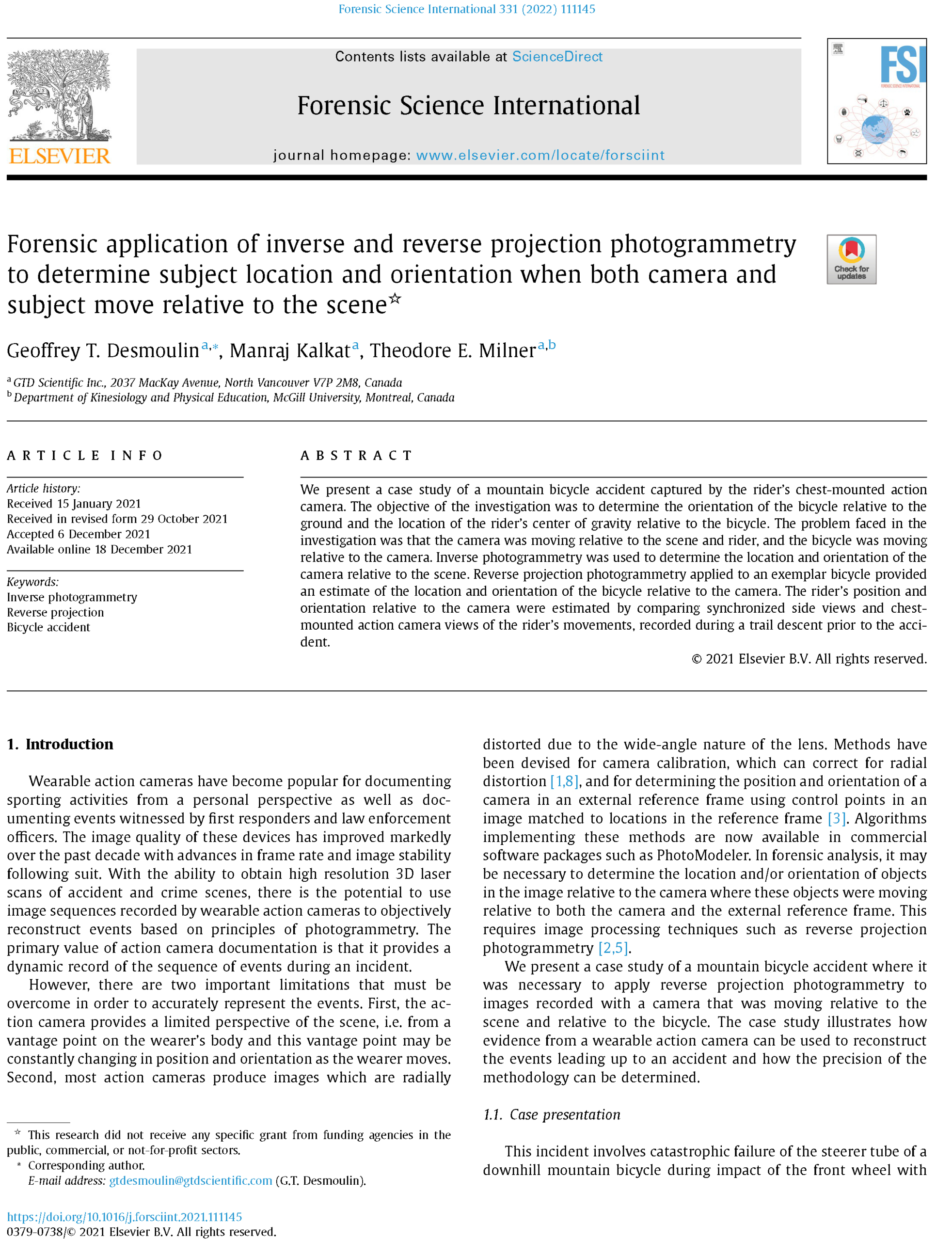Forensic application of inverse and reverse projection photogrammetry to determine subject location and orientation when both camera and subject move relative to the scene
Category: Publication.
Publication: Elsevier, Forensic Science International. 331 (2022) 111145.
Authors: Geoffrey Desmoulin, Manraj Kalkat, Theodore Milner.
Summary: Case study of a mountain bicycle accident captured by the rider’s chest-mounted action camera. The objective of the investigation was to determine the orientation of the bicycle relative to the ground and the location of the rider’s center of gravity relative to the bicycle. The problem faced in the investigation was that the camera was moving relative to the scene and rider, and the bicycle was moving relative to the camera. Inverse photogrammetry was used to determine the location and orientation of the camera relative to the scene. Reverse projection photogrammetry applied to an exemplar bicycle provided an estimate of the location and orientation of the bicycle relative to the camera. The rider’s position and orientation relative to the camera were estimated by comparing synchronized side views and chest- mounted action camera views of the rider’s movements, recorded during a trail descent prior to the accident.



